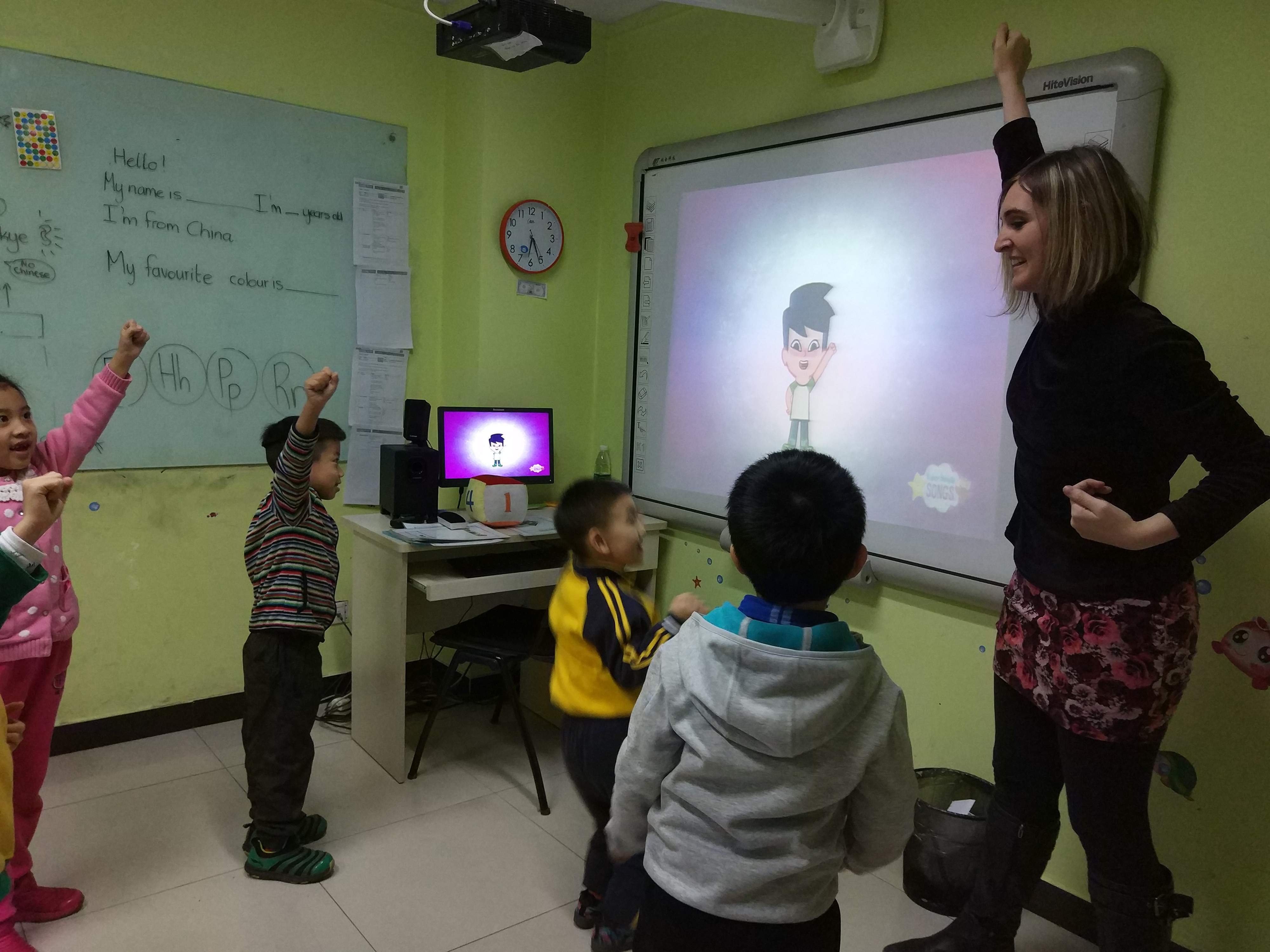5 Ways to Teach English with Movies

5 Fun Ways to Teach and Learn English with Movies
Using movies and videos in your classes can be an effective way to engage students. Exposing second language learners to authentic audio-visual materials, such as feature films, can increase motivation and improve core skills in English.
In addition, by creating task-based activities to coincide with these types of materials can make your lessons more enjoyable and productive.
This blog outlines five creative ways to help students learn English with movies in your ESL classroom!
1: Practicing Idioms and Expressions from Movies
One advantage of using real film dialogue in class is that students can hear natural rates of speech. Audio from traditional textbook packages is often slowed down significantly for ESL students. However, with authentic video, they get the real thing. In addition, they can hear natural idiomatic expressions in realistic contexts while watching.
To teach idioms using films in class, it helps to introduce the expressions before playing the video. Give them textual versions of the idioms and elicit the meanings. Outline a few examples for them vocally. Then, show the film clip of the characters saying the expressions.
As a follow-up exercise, you could ask them questions about the scene and have discussions about the characters. Also, have the students practice the expressions with their partners in conversation. They could role-play the scene afterward as well.
2: Listening for Specific Information in Movies
Teachers can also use movies in class to help students listen for specific details.
First, find a short scene from a movie online along with the original script. If there is no script available, you could listen and type it out yourself.
Next, in the script document, remove some key vocabulary from the characters’ dialogue and create a fill-in-the-blank activity. Print out several copies of the document to match the number of students that are in your class.
Before playing the video for them, introduce the film, the characters, and the situation of the scene. Giving them this background information in advance will help them with the listening task.
Finally, play the scene and have them fill in the blanks. For lower levels, you can play the scene multiple times if necessary.
3: Making predictions about movie scenes
Another fun activity that you can try with your students is to use movies to help them make predictions about future events.
Find a movie that you think most of your students haven’t seen yet. Silent films or comedy genres like Mr. Bean work particularly well because there isn’t dialogue that could cause interference or confuse them.
Play the first minute of the video, then pause it.
Model the task and give them a few examples of what you think will happen in the next scene. Ask a few students what they think will happen. Encourage them to be as descriptive as possible.
Un-pause the video and play the next 60 seconds. Everyone watches to see who made the best prediction. Continue this process for the remainder of the lesson.
You could even reward points for the most accurate predictions to make it more competitive.

4: Arranging Character Dialogue from Movies
This activity takes some preparation beforehand, but it works well once everything is ready.
Ideally, find a movie script online that is already available to save yourself time. In a document, paste a short 1-page scene from the script so that it is easy to separate the dialogue and action sequences. You are going to print it out and use scissors to cut out the sections of text.
Remember, you should consider your students’ language levels before finding the appropriate film to match their abilities.
Once you have prepared and arranged the 1-page script document, print out several copies for your class. If you have arranged the text properly on the page, it should be easy to group the papers together and cut out the sections. You can stack the papers and cut them all at once.
Next, clip the small strips of paper together with a paperclip. Try not to mix up the pages so there aren’t duplicate strips in one bundle.
In class, put the class in groups and hand out the paper-clipped strips.
The students then try to arrange the strips in proper order.
Lastly, play the movie scene. Everyone watches and listens to see if they arranged their paper strips in the correct order. Play the scene multiple times and help with any difficulties.
By the end, everyone should have the right sequence in order.
5: Elevating Descriptive Writing using Movies
Movies can also be used for improving students’ descriptive writing skills.
Play a scene from a film with the sound off and have them write what they see happening. Using this method, they can write the action sequences of the scene without the dialogue. However, for more creative students, you could have them write what they think the characters are saying.
This is a fun method for getting students to re-create their own version of the written script using their own words.
For More Tips on How to Teach and Learn English with Movies…
For more ideas on using movies in class, check out ESL Expat’s collection of ESL activities and games.
Plus, on the site’s blog section, you can read about other teacher’s stories, travel experiences, and other information about teaching English abroad.
This Guest Post comes from Paul Young, an experienced language instructor, travel blogger, and writer with an eternal vision of being somewhere within walking distance of a beach!